Super User
Embracing digitalisation to drive sustainability: Optimised production for pharmaceutical waste reduction
It’s estimated that for every kilogram of drug made in the pharmaceutical industry, 100kg of waste is produced. Manufacturing faces the need to become more efficient, flexible, and sustainable, and waste production is one area where industry could improve. Optimising a pharmaceutical production line for waste reduction can improve operational efficiency and provide significant financial savings. Here, Alexandra Hughes, Industry Sales Manager at automation software supplier COPA-DATA UK, explains how pharmaceutical manufacturers can use automation to improve production line processes with sustainability in mind.
The pharmaceutical manufacturing industry generates large amounts of waste from perishable or expired materials, scrapped products, non-compliant materials or by-products. Using data to identify areas for improvement in a pharmaceutical production line can allow manufacturers to drive sustainability in their operations, reduce the risk of scrappage and save time, money and energy.
Pharmaceutical operations are often non-circular, meaning that discarded products or materials frequently are unable to be reused or repurposed. The management process itself even incurs energy and financial costs — chemical or hazardous pharmaceutical waste often needs to be sterilised and transported to specialist facilities for disposal. Appropriate pharmaceutical waste disposal procedures are important for safety and regulatory compliance, but reducing the need for these processes in the first place can improve sustainability.
Issues in product quality can also contribute to waste. Pharmaceuticals should be manufactured in line with good manufacturing practice (GMP). Part of this is conducting in-process monitoring and investigation of any out of specification (OOS) results that come up during the testing process. If a product does not meet the stringent requirements set out by the regulatory bodies, it must be disposed of. Production line issues can also increase material loss. Operations must comply with stringent regulations, and thus any faults or interruptions in production mean that the entire batch must be discarded. This highlights the importance of effective monitoring in manufacturing — interpreting production data to determine areas of risk can help to predict and prevent unplanned downtime.
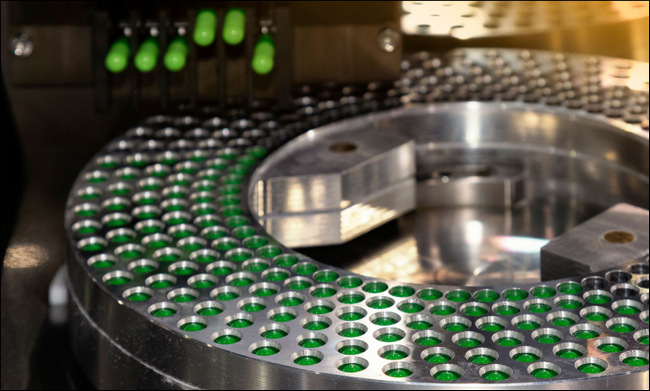
Data driven waste reduction
To reduce pharmaceutical waste, manufacturers should also consider production line optimisation to reduce the input of raw materials against the product output. Using a data-driven approach to manufacturing can support this by identifying unseen issues and faults which may accumulate and result in reduced yield. Analysing production data can highlight areas where downtime may occur or where most waste is produced to allow manufacturers to make adjustments and avoid breakdowns, batch scrappage and unnecessary energy consumption.
Using an automation system designed to optimise manufacturing can be a valuable addition to a pharmaceutical operation. COPA-DATA’s zenon platform can gather production data from every step of the process and identify areas where efficiency is lost or where there is potential for failure, allowing manufacturers to perform predictive maintenance.
This can reduce energy costs and make production more efficient and sustainable. It is also fully compliant with local and international regulations and allows manufacturers to combine production with quality control, minimising the risk of OOS batches.
There is also demand for increased flexibility in pharma as the need for precision medicine and novel therapies grows. However, modifying a monolithic production line to produce different therapies or smaller batches can be inefficient.
COPA-DATAs Module Type Package (MTP) can help to address this. It can easily reconfigure existing machinery or production units to create different products or adjust recipes. Modularising production means that different units can be connected for a plug-and-produce solution that offers flexibility and agility, reducing cost and improving efficiency, energy usage and wastage levels.
Waste in the pharmaceutical industry is not only a financial issue but a sustainability one too. Batch scrappage, waste management and disposal all have associated risks and energy costs which are only increased by avoidable production issues. Along with more careful planning, using digitalisation in a pharmaceutical plant to identify wastages can tackle this issue and improve plant flexibility and sustainability.
About COPA-DATA
COPA-DATA is an independent software manufacturer that specializes in digitalization for the manufacturing industry and energy sector. Its zenon® software platform enables users worldwide to automate, manage, monitor, integrate and optimize machines, equipment, buildings and power grids. COPA-DATA combines decades of experience in automation with the potential of digital transformation. In this way, the company supports its customers to achieve their objectives more easily, faster and more efficiently.
The family-owned business was founded by Thomas Punzenberger in 1987 in Salzburg, Austria. In 2020, with more than 300 employees worldwide, it generated revenue of EUR 54 million.
Mitigating arc flash events in process heating applications
Medium or high voltage equipment for industrial applications always carries certain safety risks. Arc flash events are a prime example of a rare, but potentially fatal, situation that can be mitigated with the right technology. As electric process heaters become a popular alternative for larger applications that have historically favored gas-fired heaters, it’s vital to consider how they incorporate arc flash mitigation features. Here, Dennis Long, chief system designer for energy and environmental technologies business unit at industrial heating technology manufacturer Watlow, shares insight into why arc flashes happen and how manufacturers can mitigate their risk.
Concerns about decarbonization, automation and safety have driven many organizations to replace gas fired heaters with larger electrical alternatives. As medium voltage process heaters are relatively novel to many applications, they represent a potential new source of risk that manufacturers must recognize.
Potential risks
An arc flash is an electrical explosion that occurs when there is a short circuit in a system, which can be caused by a build-up of corrosion or conductive dust. If the voltage is high enough, and if there is a path to ground or a lower voltage, the resistance of the air is overcome and results in an arc.
Arc flash events can result in significant damage. As the energy release increases, the risk of fire and injury rises with it. If the energy release is high enough, molten conductor metal and high-pressure plasma energy that can escape from the cabinet, posing a risk to anyone in the vicinity.
The potential arc flash energy is determined by several factors including equipment voltage, available current and the duration of the event. While it may be practical to reduce the potential arc flash energy while limiting voltage or current, overall project cost can make this difficult. Although arc flash incidents are rare, their potential for damage, injury and death makes them a great concern. Some estimates put the incidence of arc flash events between five to ten per day worldwide.
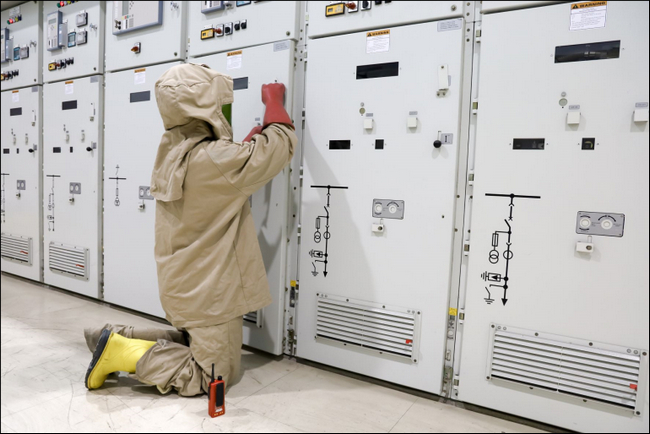 Engineer wears suit to protect from potential arc flash
Engineer wears suit to protect from potential arc flash
Reducing the effects
There are three main strategies for minimizing the effects of arc flashes, including increasing the distance from the potential source of an event, reducing the available fault current and decreasing the duration of the event. All strategies can be combined to ensure maximum safety, but this is not practical when considering overall project cost. That said, the duration of the event is the most viable influencer to reduce damage and has the largest impact on the total amount of energy released.
There are two key approaches to compare: arc-resistant cabinets and arc mitigation technologies. Arc-resistant cabinets aim to reduce exposure to arc events by encasing the system in a metal-clad cabinet with a venting system. The heated gas and pressure is redirected through a duct, reducing the energy that could potentially explode. However, a drawback lies in the fact that the cabinet must be closed for the arc-resistant cabinet to work, as many arc events occur during maintenance, when the doors are open.
Mitigation technologies
Instead of redirecting the energy from the event, arc mitigation seeks to reduce the energy of the event itself by limiting its duration. This is done by detecting the arc flash early and automatically tripping the appropriate circuit. This can be done via sensing current, referred to as current arc mitigation, or sensing light, known as optical arc mitigation.
In optical arc mitigation, the light emitted by the arc within the enclosure builds quickly, which can be detected by a photoelectric receptor, even in the early stages of the event. When detected, the signal is then sent to a protective relay, which trips the breaker automatically without the need for human intervention.
One of the main advantages of this approach is that it is independent of the actual magnitude of the arcing fault current. This allows the system to detect arcing in an early stage of its development and trigger the break sooner, which limits the duration of the event and the total energy produced.
On the other hand, current arc mitigation uses current transducers to sense an increase in current produced by the arc. If the transducers are not sized correctly, they may not shut the system down or may be unable to clear the event.
Arc mitigation technologies also reduce damage to equipment, as it can function even when the doors are open and maintenance is being performed. For example, in the Watlow POWERSAFE™ thermal system, sensors can be placed within the thermal controller, SCR node single contact or node, which are protected by a feeder. When the sensor senses an arc flash event in any compartment, the feeder shuts down the lineup to limit damage caused by the arc.
As medium voltage process heaters become more popular, they must be designed with safety in mind. Arc flash mitigation technologies represent the best approach here, as they decrease the duration of arc flash events and hence the energy released, helping to minimize the risk and damage involved.
About Watlow:
Watlow is a global industrial technology company that uses its world-class engineering expertise, advanced thermal systems and manufacturing excellence to enrich everyday life. Many of the world’s leading companies leverage our technology in vital applications such as semiconductor processing, environmentally-friendly energy solutions and lifesaving medical and clinical equipment, to name a few. Founded in 1922, Watlow’s culture is driven by our purpose of “Enriching Lives Through Inspired Innovation,” enabling us to deliver high-impact solutions that improve our customers’ competitive advantage.
Hexagon unveils life-of-mine smart platform for mining
Hexagon’s Mining division today introduced the Power of One platform, a holistic, life-of-mine smart solution connecting sensors, software, infield apps and cloudware. Available and ready to implement, this technology connects the mine to the boardroom via a single onboard ecosystem comprising a smart computer, antenna and display. It will empower customers’ digital transformation, connecting key mining workflows for a safer, more productive and sustainable future.
Hexagon unveiled the platform at HxGN LIVE Global, Hexagon’s digital reality solutions conference. Harnessing data from multiple sensors in a simple and consolidated software architecture, the platform helps mines to become situationally aware, self-learning and autonomously connected in the field and in the cloud.
 For the customer, the platform offers an effortless experience with a seamless UI/UX and consistent functionality. Reduced cost of ownership, reduced deployment and training time, reduced supply chain complexity and increased operator adoption are just some of the platform’s many benefits.
For the customer, the platform offers an effortless experience with a seamless UI/UX and consistent functionality. Reduced cost of ownership, reduced deployment and training time, reduced supply chain complexity and increased operator adoption are just some of the platform’s many benefits.
“The Power of One platform is a landmark enabler for next-generation autonomy,” said Nick Hare, Hexagon’s Mining division President. “It offers mines a uniquely intelligent approach based on open architecture to autonomously connect key mining ecosystems, such as exploration, planning, drill and blast, material movement and mine monitoring.
“It’s the scalable, platform-agnostic answer to challenges previously addressed by point solutions and multiple vendors.”
Rob Daw, Hexagon’s Mining division Chief Innovation Officer, described the platform as unique and profoundly disruptive.
“For the first time, one technology partner connects the mine to the boardroom via a single onboard ecosystem comprising a smart computer, antenna and display,” said Daw. “This marks the fulfillment of a commitment to connect all parts of a mine and for the industry, it points the way to a safer, more productive and sustainable future.”
For more information, please contact: Ian Leones, Content Marketing Specialist, Hexagon’s Mining division, 520-495-1518, This email address is being protected from spambots. You need JavaScript enabled to view it.
Hexagon is a global leader in digital reality solutions, combining sensor, software and autonomous technologies. We are putting data to work to boost efficiency, productivity, quality and safety across industrial, manufacturing, infrastructure, public sector, and mobility applications.
Our technologies are shaping production and people-related ecosystems to become increasingly connected and autonomous — ensuring a scalable, sustainable future.
Hexagon’s Mining division solves surface and underground mine challenges with proven technologies for planning, operations and safety.
Hexagon (Nasdaq Stockholm: HEXA B) has approximately 21,000 employees in 50 countries and net sales of approximately 4.6bn USD. Learn more at hexagon.com and follow us @HexagonAB
CH-Bioforce to receive up to €15 million in funding from European Innovation Council
The decision of the European Innovation Council (EIC) to fund CH-Bioforce is the result of long-term and thorough work, and it will also help the company raise other funding. CH-Bioforce aims to build a biomass processing plant in Raisio in 2024.
CH-Bioforce Oy received a major funding decision from the European Innovation Council in June 2022 as part of the EIC Accelerator programme. Funding will amount to a maximum of €15 million; the total amount and form will be determined as the project progresses.
CH-Bioforce has also received funding from the EIC prior to this funding round. The previous funding was targeted at SMEs seeking strong international growth and with innovation background primarily in deep tech research.
“EIC Accelerator funding is a major achievement for us. Our business plan has been carefully reviewed and approved, which will also help us obtain other financing,” says Petri Tolonen, CEO of CH-Bioforce.
The positive funding decision was based on a highly detailed, multi-stage process with the EIC.
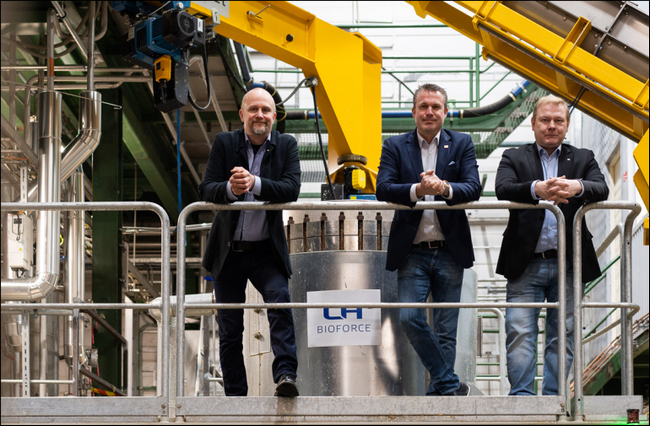 Inventors of CH-Bioforce’s technology: Sebastian von Schoultz, Nicholas Lax, Lari Vähäsalo at the CH-Bioforce pilot plant in Raisio, Finland.
Inventors of CH-Bioforce’s technology: Sebastian von Schoultz, Nicholas Lax, Lari Vähäsalo at the CH-Bioforce pilot plant in Raisio, Finland.
Significant achievement for the Finnish bioeconomy
The EIC provides support for the whole innovation chain: from top-level technology research to the exploitation of innovative technology applications. The support is mainly targeted at the rapid scaling and internationalisation of SMEs.
Funding in the EIC Accelerator programme is focused on testing, validating, piloting and scaling new and innovative products and solutions before the actual commercialisation phase.
“This funding and its recognition also represent an achievement for the Finnish bioeconomy. It demonstrates that Finland is a significant player in the circular economy and bioeconomy at the EU level,” Tolonen says.
CH-Bioforce has also received support from Business Finland for business development, which shows that the utilisation of biomass and the circular economy are strong trends – now and in the future.
“The scalability of our technology and process are great advantages that have certainly contributed to the positive decision of the EU. One of our business models is to license our technology to companies that can use side streams from their production as raw material and utilise the manufactured products internally,” says Tolonen.
CH-Bioforce is at the heart of the circular economy
The business idea of CH-Bioforce is based on industrial and, in particular, agricultural side streams. The company’s operations are founded on a ‘from waste to value’ mindset.
“In agriculture, a lot of usable raw materials are left over. Currently, they are simply being burnt and end up not being utilised. With our solution, lignin, hemicellulose and cellulose can be separated almost completely and very purely from straw, for example. These raw materials can be used to replace oil-based raw materials in the manufacture of several different consumer products,” Tolonen says.
CH-Bioforce’s technology can utilise almost any biomass, which means that it is not tied to any particular biomass type. The CH-Bioforce pilot plant is located in Smart Chemistry Park in Raisio.
EIC Accelerator provides funding for commercialisation and scaling
The European Innovation Council (EIC) accelerates the emergence of innovations by providing funding and support for the development of future technologies and the commercialisation and scaling of research results.
Companies can apply for grant funding for their projects from Open calls for any topic, or thematic Challenge calls for specific topics. Funding for one project can amount to up to 2.5 million euros.
In addition, equity funding can be combined with funding for operational activities during the actual commercialisation and scaling-up phases. The maximum amount of this funding, also referred to as the investment component, is €15 million. The final amount and form will be negotiated with the EIC Fund after the project has been initiated.
PulPac continues to expand the Dry Molded Fiber patent portfolio
With two new patent applications filed last week, PulPac continues to expand the Dry Molded Fiber patent portfolio. The new patent applications are directed to ejection elements in connection to the forming mold. The main purpose of the ejection elements is to release the product from mold parts for an easy removal of the products. The ejection elements can also be used for imprinting a pattern in the product, to be read or scanned for information purposes.
Dry Molded Fiber is invented, patented and licensed to packaging manufacturers by PulPac. The game-changing technology is up to ten times faster than traditional fiber forming methods and offers highly competitive unit economics. In addition, being a dry process, it saves significant amounts of valuable water and energy, resulting in up to 80% lower CO2 emissions compared to alternatives.
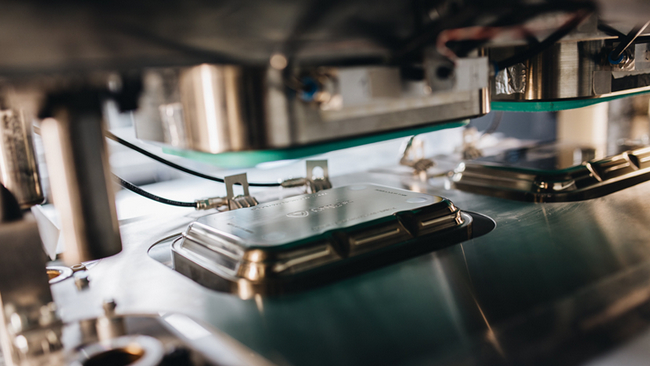 Dry Molded Fiber - the fiber forming technology that can transform the industry and establish a new global standard for sustainable fiber-based packaging and single-use items.
Dry Molded Fiber - the fiber forming technology that can transform the industry and establish a new global standard for sustainable fiber-based packaging and single-use items.
To date, PulPac holds 28 patent families with 85 granted national patents and plus 50 pending patent applications. New patent applications are filed continuously. In addition, PulPac has a substantive body of know-how and trade secrets that are shared only within the Dry Molded Fiber network. Based on the core IP, PulPac has developed a complete technology platform covering multiple areas of fiber application manufacturing. All driven by the need of disruptive technical solutions that enable a sustainable packaging industry.
Peter Ekwall, CIPO, comments, “Innovations are detected and harvested every week, which gives us the possibility to rapidly expand our patent portfolio with good quality. We also see an increased interest from our partners to contribute to the patent and technology pool. All things considered; this is beneficial for everyone that wants to join us in our mission to replace single-use plastic as soon as possible.”
About PulPac
PulPac provides the packaging industry with a groundbreaking manufacturing technology for low-cost, high-performance fiber-based packaging and single-use products. By pioneering the technology of cellulose molding PulPac enables their customers to replace single-use plastics with a sustainable and cost competitive alternative globally.
For additional information about PulPac, please visit www.pulpac.com
The power of cloud-based quality management
Jason Chester (Director of Global Channel Programs, InfinityQS) discusses 4 reasons why food and beverage processors should consider moving quality to the cloud.
 Jason Chester (Director of Global Channel Programs, InfinityQS)Manufacturing has a history of moving at a glacial pace when adopting new technology such as cloud-based solutions, but the cloud is not new anymore. In recent years, cloud computing and SaaS (Software-as-a-Service) have begun to dominate. More and more manufacturers are looking to switch their quality management to a cloud-based quality system. Simply, in today’s ever-changing and volatile manufacturing climate, the cost advantages, power, and versatility of the cloud have become essential to survival.
Jason Chester (Director of Global Channel Programs, InfinityQS)Manufacturing has a history of moving at a glacial pace when adopting new technology such as cloud-based solutions, but the cloud is not new anymore. In recent years, cloud computing and SaaS (Software-as-a-Service) have begun to dominate. More and more manufacturers are looking to switch their quality management to a cloud-based quality system. Simply, in today’s ever-changing and volatile manufacturing climate, the cost advantages, power, and versatility of the cloud have become essential to survival.
The stakes are high when it comes to quality and safety
Many food and beverage manufacturers are searching for new strategies and tools to help address their quality and safety challenges. Fortunately, the most powerful and valuable resource is already at their disposal - data.
Quality data produced on the plant floor enables manufacturers to keep products and processes within specification, constantly producing high-quality products while maximising yield and minimising waste. However, this is only possible when that data is accessible and actionable. Regrettably, a lot of food and beverage manufacturers keep their quality data protected away in paper checklists, spreadsheets, or siloed databases — leaving all those cherished insights unused.
Investing in quality data management now will allow manufacturers to reap future rewards
The cloud upends how manufacturers can collect, store, analyse and utilise quality data. With cloud-based quality management software, data from all processes, lines, and sites — and even data from suppliers — are unified in a centralised repository. The data and subsequent analyses become rapidly available and effortlessly consumable.
By bringing quality data online, manufacturers gain many valuable benefits. The following advantages help to drive higher levels of quality, safety and sustainability across processes and supply chains:
- Collection and analysis of data from production processes in real-time
Manufacturing is a continuous and real-time activity. Collecting data in batches, and performing analysis or reporting on that data in batches (if it is even at all) inevitably means that quality issues and performance bottlenecks can potentially go unchecked for some considerable time. However, when data is collected and analysed in real-time, then trends or problems can be detected before they manifest themselves into significant events.
When a quality, safety or performance issue is detected, alerts can be immediately issued to the appropriate operators or quality personnel. They can adjust or make corrections early on, ensuring products and processes are continually optimised. This proactive approach is the key to reducing waste, protecting profits, and keeping defective products from ever making it out the door.
Cloud-based quality management software offers the visibility process manufacturers need to break out of firefighting mode. Rather than reacting to one problem after another, they can work on preventing problems from getting out of hand or even happening in the first place.
And because all that information is instantly available via the cloud, plant leaders and quality managers can stay on top of what is happening without being physically present on the plant floor. Whether they are in a back office, on the road or otherwise working remotely, they have all the information needed to ensure operations run smoothly.
2. Utilising advanced analysis tools
With paper-based systems — or even legacy on-site software — quality data is often siloed between disparate production sites across an enterprise. What is more, data is often not standardised across those sites or systems. This makes comparative analysis nearly impossible and fraught with difficulty.
But that all changes when data from every process, every line and every site are standardised and aggregated in the cloud. This single source of truth can guide decisions about enterprise-wide quality and performance improvements, compliance and more.
For instance, modern cloud solutions offer innovative real-time data visualisations and advanced analysis tools that help executives and quality pros compare performance across all sites. They can spot problem areas in need of abrupt intervention, better prioritise resources and recognise sources of best practices to benchmark against across their organisation.
3. Ensuring compliance
Food and beverage manufacturers must comply with national and international regulations, as well as numerous industry standards. Meeting those stringent requirements — and all the documentation, reporting and auditing involved — can take up serious time and resources. Cloud-based quality systems make it easier than ever to uphold compliance and make audits a breeze.
Compliance can also be enhanced through the systems themselves. When quality checks or data collections are missed, automated notifications remind operators and alert supervisors. This keeps everyone on top of critical quality and safety checks.
With historical data stored in a centralised cloud repository, plant managers can easily generate reports to verify compliance. And in the event of an audit, they can collect and present requested data in minutes — rather than the days or even weeks it has historically taken to sift through mountains of paper files and spreadsheets. With the cloud, everything manufacturers need to maintain compliance is right at their fingertips.
4. Visibility upstream
Safe, high-quality food products start with, high-quality ingredients. Cloud-based quality management helps ensure that incoming raw ingredients are up to quality standards — before they are accepted and incorporated into final products.
Food and beverage manufacturers can demand that their suppliers digitally collect and share quality data through the cloud-based system. They can then observe this data in real-time to monitor the quality of raw ingredients coming from suppliers around the globe. They obtain oversight over third-party quality inspections and, thus, ensure only the highest quality ingredients get used in their products. On top of that, food and beverage processors can evaluate the capabilities and performance of various suppliers over time to establish the best suppliers to work with.
Overall, this upstream visibility helps pre-emt quality and safety issues, even before those ingredients arrive on site.
Getting the ball rolling
One way to get the ball rolling with a phased approach is to start with a small-scale deployment concentrated on a single process that will produce quick wins and evidence of the value — a low-effort, high-return project. This will prove the value of the cloud-based quality solution to stakeholders, get plant employees happy using a new solution and lay the foundation for wider utilisation across the enterprise.
Manufacturing needs to move more quickly to adopt new technologies. SaaS technology is the answer for many manufacturers. The power, flexibility, and versatility of the cloud have become essential to manufacturing survival.
VTT cuts emissions from its electricity consumption to a fraction of previous level
At the beginning of 2021 VTT started to buy renewable electricity verified with a guarantee of origin for its premises. The change significantly reduced the annual greenhouse gas emissions from VTT's operations. Meanwhile, it is an important step toward VTT's goal of carbon neutrality.
Sustainability is at the core of VTT's strategy, and with respect to environmental responsibility, the goals include carbon neutrality by 2030. This requires significant action aimed at reducing greenhouse gas emissions.
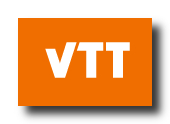 Consumption of electricity has been the overwhelming source of emissions caused by VTT activities. The transition to renewable electricity verified by a guarantee of origin changed the situation.
Consumption of electricity has been the overwhelming source of emissions caused by VTT activities. The transition to renewable electricity verified by a guarantee of origin changed the situation.
“The estimated greenhouse gas emissions from electricity bought by VTT were more than 9,000 tons in 2020. In 2021 this had gone down to about 600 tons. The change is truly significant”, says Senior Scientist Hanna Pihkola. In 2021 93% of the electricity consumed by VTT was under a guarantee of origin.
As the production of renewable energy also produces greenhouse gas emissions, the shift to renewable energy raised indirect emissions connected with VTT operations to some degree. However, the increase is fairly small compared with the reduction of emissions from the use of electricity.
Next attention to heating, air travel, and procurements
The reduction in emissions from the use of electricity is taking VTT closer to its carbon neutrality goal, but much work remains to be done. After the use of electricity, the greatest emissions caused by VTT come from the heating of buildings and air travel.
VTT's next development targets on the way to the carbon neutrality goal of 2030 are:
- ascertaining the possibilities of procuring low-emission, or carbon neutral district heating
- improving energy efficiency
- reducing flight emissions
- taking climate impact into account in the procurement of goods and services.
“Carbon neutrality by 2030 is an ambitious goal. To achieve the goal, much work needs to be done and many stones need to be turned in different parts of the organisation. When all possible measures to reduce them have been implemented, we will also have to ponder how best to compensate for the emissions that remain”, Pihkola says.
VTT's annual greenhouse gas emissions have been evaluated according to the principles of the ISO14064-1:2018 (carbon footprint calculations for an organisation) standard since 2018. The emissions are reported as part of VTT's annual and corporate responsibility report.
VTT is a visionary research, development and innovation partner. We drive sustainable growth and tackle the biggest global challenges of our time, and turn them into growth opportunities. We go beyond the obvious to help the society and companies to grow through technological innovations. We have 80 years of experience of top-level research and science-based results. VTT is at the sweet spot where innovation and business come together.
VTT – beyond the obvious
Metsä Group’s 3D fibre product Muoto® is a significant new initiative in the packaging market
Metsä Spring, Metsä Group’s innovation company, has launched a new 3D fibre product called Muoto®. Muoto has been produced at Metsä Group’s and Valmet’s demo plant in Äänekoski since May 2022, and is made of Metsä Group’s wood fibres.
Muoto is a significant initiative in the packaging market. It is user-friendly, sustainable and scalable and features advanced technology. Using brand new technology, the products are pressed into their final form and their properties can be tailored during the production process according to the intended purpose. The raw material of Muoto grows in northern, sustainably managed forests and is fully traceable.
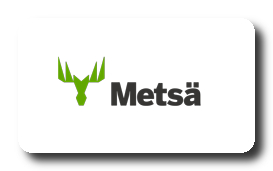 Both renewable and recyclable, Muoto is a good alternative to fossil plastic, for example, in food packaging, including serving dishes or containers of various sizes and shapes. Packaging that is produced to meet a specific need is ideal for reducing food waste.
Both renewable and recyclable, Muoto is a good alternative to fossil plastic, for example, in food packaging, including serving dishes or containers of various sizes and shapes. Packaging that is produced to meet a specific need is ideal for reducing food waste.
“Plastic is everywhere. It will continue to have a role in the future, but the growing packaging industry requires a variety of new sustainable alternatives; Muoto is our answer to these needs. This brand new, wood-based packaging has attracted a great deal of interest in our customer base,” says Jarkko Tuominen, Metsä Group’s Project Director.
Muoto has just got off the ground, and now its product features and production method are being further developed and the product’s market potential is being tested. A well-recognised brand plays an important role in this work. If the market interest and the product viability can be proved on a large scale, Metsä Group will consider building a larger production unit.
Learn more about Muoto online at muoto.io.
Metsä Spring
www.metsaspring.com
Innovation company Metsä Spring invests expertise and financial resources into initiatives with the ambition to reshape the forest-based bioeconomy, aiming to increase the value for Metsä Group’s stakeholders in the long-term.
Metsä Group
www.metsagroup.com
Metsä Group is leading the way in advancing the bioeconomy. We invest in growth, bioproduct development and a fossil free future. The raw material for our products is renewable wood from sustainably managed northern forests. We focus on the growth sectors of the forest industry: wood supply and forest services, wood products, pulp, fresh fibre paperboards, as well as tissue and greaseproof papers.
Metsä Group’s annual sales amount to approximately EUR 6 billion, and we have around 9,500 employees in 30 countries. Our international Group has its roots in the Finnish forests: our parent company is Metsäliitto Cooperative which is owned by nearly 100,000 forest owners.
Metso Outotec renews its NW Rapid portable crushers and screeners for 250 thp range
Metso Outotec is renewing its NW™ Rapid™ portable plant solutions in the 250 tph capacity range.
The NW Rapid concept provides the quarries with capacity, mobility and flexibility and enables a short time between job assignment and delivery. The plant consists of primary, secondary and tertiary crushing stations that make the entire plant quick to set up, as the process layout and flow sheets are pre-designed for different capacities and amounts of end products. As wheel-mounted machines and conveyors are designed to be set up without heavy cranes, the entire plant can be re-located in 1-2 years to a new crushing or construction site. Crushing permits are also easier to get for a portable plant.
”Producing aggregates near a periodical construction site such as a highway, airport or a dam project, there are significant savings compared to transporting the rocks from a stationary quarry. To get our customers an even better competitive edge, we have renewed the 250 tph range crushers with an integrated screen. The material flow is better, separate the electric cabinet from the chassis for improved erconomics, and we are introducing a new on-board under size conveyor for easier transportation of the NW220GPS, NW200HPS and NW7150S Rapid in one piece”, says Jarno Pohja, Product manager, Portable solutions, Aggregates business area, Metso Outotec. ”We are also adding two new portable screens to the range, NW2060S and NW1855S, to have even more flexibility for the customer process”, adds Jarno.
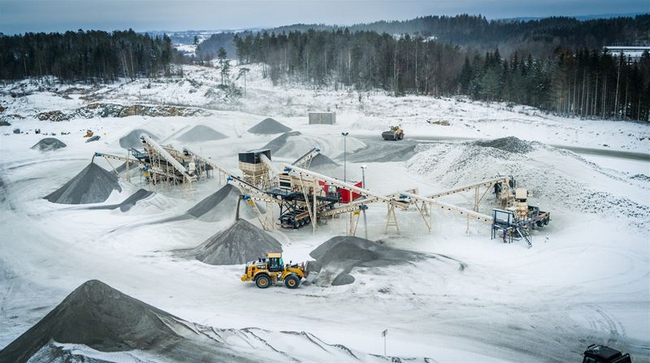
The benefits of the NW Rapid portable crushing solutions include
- Possible to re-locate in 1-2 years for crushing near the construction site and easier crushing permits
- Fast and easy purchase with 15 ready-made layouts and flowsheets
- Fast set-up with well-documented support and hydraulic options
- The highest in-class capacity ranges up to 350tph
- Process control and remote user interface included as standard with Metso Outotec IC process control system
- Lifecycle Services: Equipment Protection Services (EPS) including Metrics Services, scheduled inspections and extended warranty, wear and spare parts delivery plan
The NW Rapid portable crushing plant solutions will be showcased in the Hillhead trade event in the UK on June 23-24, 2022, in Metso Outotec’s distributor Duo Group, stand D6.
More information on our website.
Metso Outotec is a frontrunner in sustainable technologies, end-to-end solutions and services for the aggregates, minerals processing and metals refining industries globally. By improving our customers’ energy and water efficiency, increasing their productivity, and reducing environmental risks with our product and process expertise, we are the partner for positive change. Metso Outotec is committed to limiting global warming to 1.5°C with Science-Based Targets.
Headquartered in Helsinki, Finland, Metso Outotec employs over 15,000 people in more than 50 countries and its sales for 2021 were about EUR 4.2 billion. The company is listed on the Nasdaq Helsinki. mogroup.com
Valmet receives the 17th automation order from Hitachi Zosen Inova – now for the Slough Multifuel energy-from-waste plant in the UK
Valmet will supply automation to the new Slough Multifuel energy-from-waste plant close to London, UK. The order was placed by Hitachi Zosen Inova AG (HZI), the facility's engineering, procurement and construction contractor.
This is the seventeenth time that HZI has chosen Valmet’s automation technology for its energy-from-waste plant projects. The plant is owned by a joint venture between a UK energy company SSE Thermal, and Copenhagen Infrastructure III K/S, a fund managed by Copenhagen Infrastructure Partners (CIP).
The order was included in Valmet’s orders received for the first quarter of 2022. The value of the order will not be disclosed. The deliveries will take place from early September 2022 to January 2023. The end customer will take over the automation system in late November 2024.
“We benefit from the experience gained in Valmet’s latest UK projects and can implement it in the Slough project. Valmet has been proactive in supporting, answering, and giving ideas to the project,” says Aristeidis Charitos, Technical Project Manager, Slough Project, HZI.
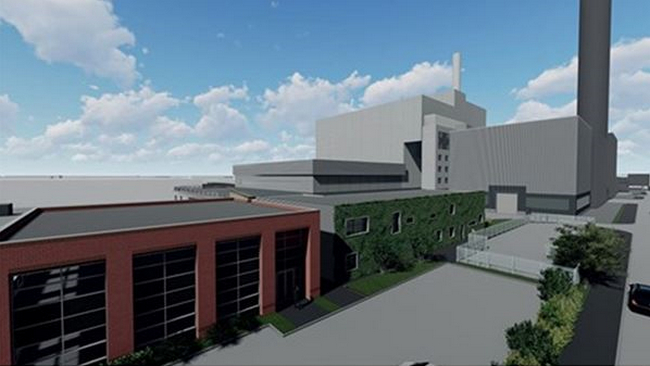 Valmet will supply an automation system to the new Slough Multifuel energy-from-waste plant close to London, UK. This is the 17th time that Hitachi Zosen Inova AG (HZI) has chosen Valmet’s automation technology for its energy-from-waste plant projects.
Valmet will supply an automation system to the new Slough Multifuel energy-from-waste plant close to London, UK. This is the 17th time that Hitachi Zosen Inova AG (HZI) has chosen Valmet’s automation technology for its energy-from-waste plant projects.
“The current global semiconductor chip shortage is a burden for all our projects. Due to the fact that Valmet DNA Automation System offers three different models of process stations, Valmet is able to deliver the solution within the project time schedule,” says Adrian Hiemann, DCS System Engineer, Slough Project, HZI.
“The end customer has been satisfied with our Valmet DNA system at the Ferrybridge 1 and 2 energy-from-waste plants delivered in 2012 and 2016. HZI has been our customer since 2008. The cooperation was good this time as well, and we were able to fulfil the technical requirements. For Valmet, this project is important as it continues and expands our market share in the UK energy-from-waste market,” says Rene Neubert, Sales Director, Automation, Valmet, Austria.
After starting full operation in 2024, the Slough Multifuel plant will process around 480,000 tons of residual waste from the Greater London Area per year and will cover the annual power consumption equivalent to approximately 100,000 households.
Technical information about the delivery
Valmet’s delivery consists of a Valmet DNA Automation System, a protection system, integrated controls for 11 kV distribution, large screens, an extensive operator interface for the control room, an electrical control system, and 3,200 hardwired signals as well as more than 7,300 links and data points.
About the customer Hitachi Zosen Inova (HZI)
Zurich-based green-tech company Hitachi Zosen Inova (HZI) is a global leader in solutions for energy transition and circular economy including Energy from Waste (EfW) and Renewable Gas (RG), operating as part of the Hitachi Zosen Corporation Group. HZI acts as a project developer, technology supplier and engineering, procurement and construction (EPC) contractor delivering complete turnkey plants and system solutions for thermal and biological waste recovery. Its solutions are based on efficient and environmentally sound technologies, are thoroughly tested, and can be flexibly adapted to customer requirements. The innovative and reliable solutions have been part of more than 1,600 reference projects worldwide.
Valmet is a leading global developer and supplier of process technologies, automation and services for the pulp, paper and energy industries. With our automation systems and flow control solutions we serve an even wider base of process industries.
We aim to become the global champion in serving our customers. Our 17,000 professionals work close to our customers and are committed to improving our customers’ performance – every day.
The company has over 220 years of industrial history and a strong track record in continuous improvement and renewal. In 2022, a major milestone was achieved when the flow control company Neles was merged into Valmet. The combined company’s net sales in 2021 were approximately EUR 4.5 billion based on the respective company figures.
Valmet’s shares are listed on the Nasdaq Helsinki and the head office is in Espoo, Finland.
Follow us on valmet.com
